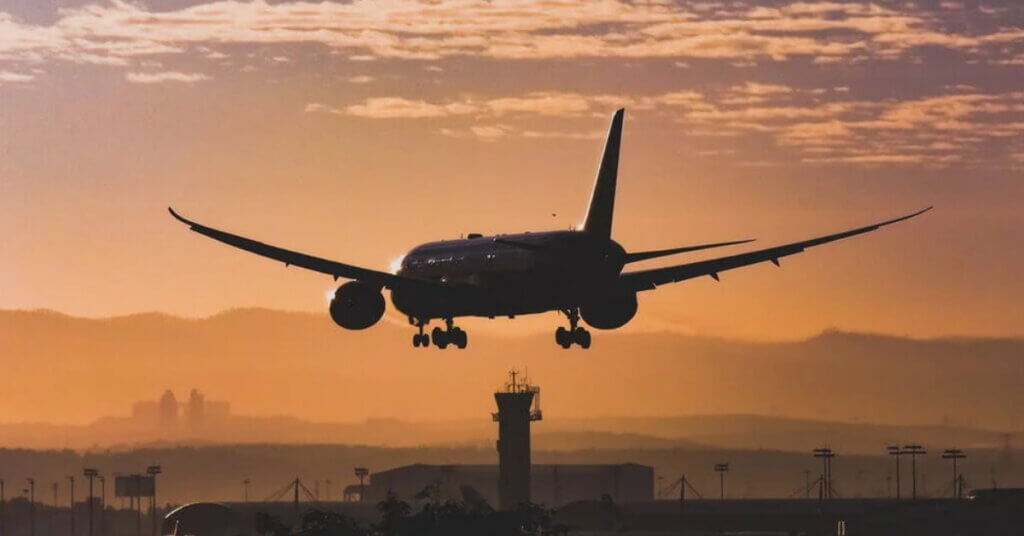Two major players determine if you can fly with your electric unicycle. It’s the Transportation Security Administration (TSA) and Federal Aviation Administration (FAA) with the rules governing what is allowed when flying and then it’s the rule of the individual airlines such as Delta, Southwest, United, and Jet Blue.
No, you can technically not fly with most electric unicycles on the market. The battery of an EUC is typically more than the limit set by the FAA of <160 Wh. Also according to ITIA, many airlines have implemented a total prohibition on the carriage of self-balancing vehicles in passenger baggage.
Keep in mind that the airline and TSA still have the right to deny you from flying with your EUC.
Please note that this post is related to TSA and FAA regulations only and not all individual airlines. Users have reported that TSA agents can and have stopped Onewheels that were within the allowed limits from flying.
What if your battery is below 160Wh
Some electric unicycles like the Inmotion V3Pro have a battery just below the TSA limit. Some users have passed the TSA and boarded planes with their devices. The key here is to make it possible for the inspector to verify the capacity of the battery. Some have even removed the battery from the unicycle for inspection.
Other riders have had lesser luck and have not even been allowed to board a plane with an empty wheel.
The issue isn’t what the airline chooses they will or won’t transport, but rather the variation/discretion of each airline employee about how they interpret and enforce airline rules. It makes it impossible to predict. You can read an airline’s terms & conditions in text and/or call and get a direct answer to a question over the phone, and then some airline employee turns around and says the rule is different or enforces it differently when you get to the airport/plane.
Reading the guidelines TSA/FAA states that the airline is making the final decision. What’s governed by the regulations is the amount of active Lithium inside the battery, and the Onewheel Pint is below that for carry-on luggage.
With airline approval, devices can contain larger lithium-ion batteries (101-160 watt-hours per battery), but spares of this size are limited to two batteries in carry-on baggage only. This size covers the largest aftermarket extended-life laptop batteries and most lithium-ion batteries for professional-grade audio/visual equipment.
FAA.gov
The key is to be positive and provide relevant information to the TSA agents when questioned. I recommend having any documents printed out and handy if you need to show them to the agent.
When flying the main goal should be getting through TSA. Be prepared to answer any question and remember to show that this device isn’t specifically prohibited by the FAA and that it uses a safe battery that is under 160 wh. Remember to tell them that you have researched the device to make sure it is within the FAA guidelines.
It is normal for the TSA agents to want to see the wattage on your battery to confirm that it’s within the limits. It’s a good idea to package your EUC in a duffle bag or something that completely covers it. Since the airlines themselves aren’t checking what’s inside carry-on bags, they don’t have much influence on this process after you have passed the TSA.

Airlines banning Electric Unicycles and PEV
The issue comes that more and more commercial airlines signed a ban on PEV (EUC/hoverboards and such) no matter battery size. This is to avoid discussion or differences between employees at check-in. Even with the battery pack uninstalled.
The following operators (airlines) have implemented a total prohibition on the carriage of balance wheels, hoverboards, and other self-balancing vehicles in passenger baggage. This list is current as of 13 January 2016
| Airline | Code | Airline | Code |
|---|---|---|---|
| Adria Airways | JP | Finnair | AY |
| Aegean Airlines | A3 | FlyBE | BE |
| Aer Lingus | EI | Garuda | GA |
| Aerolineas Argentinas | AR | Gulf Air | GF |
| Air Astana | KC | Hawaiian Airlines | HA |
| Air Austral | UU | Hong Kong Airlines | HX |
| Air Berlin | AB | Iberia | IB |
| Aircalin | SB | Insel Air | 7I |
| Air Canada | AC | Japan Airlines | JL |
| Air France | AF | Jet Airways | 9W |
| Air New Zealand | NZ | JetBlue | B6 |
| Air Seychelles | HM | Jetstar | JQ |
| Air Tahiti | VT | KLM – Royal Dutch Airlines | KL |
| Air Transat | TS | Korean Airlines | KE |
| Alaska Airlines | AS | LAN Airlines Group | LA |
| Alitalia | AZ | Lufthansa LH | LH |
| All Nippon | NH | Malaysia Airlines | MH |
| American Airlines | AA | Middle East Airlines | ME |
| Asiana | OZ | Monarch | ZB |
| Austrian Airlines | OS | Oman Air | WY |
| Avianca | AV | Philippine Airlines | PR |
| Bangkok Airways | PG | Qantas | QF |
| British Airways | BA | Qatar Airways | QR |
| Brussels Airlines | SN | SAS | SK |
| Cathay Pacific | CX | Saudi Arabian Airlines | SV |
| China Airlines | CI | Singapore Airlines | SQ |
| Condor | DE | South African Airlines | SA |
| Copa Airlines | CM | Southwest Airlines | WN |
| Corsair | SS | Sri Lankan Airlines | UL |
| Croatia Airlines | OU | Swiss International | LX |
| Delta Airlines | DL | TAM Airlines | JJ |
| Dragonair | KA | Thai Airways | TG |
| Easyjet | U2 | Thomas Cook | DK/HQ/MT |
| El Al | LY | Thomson Airways | BY |
| Emirates | EK | Transportes Aereos del Mercosur | |
| Etihad | EY | Turkish Airlines | TK |
| Eva Airways | BR | United Airlines | UA |
| Fiji Airways | FJ | Virgin Australia | VA |
The International Air Transport Association (IATA)
From 57 founding members in 1945, IATA now represents some 290 airlines in 120 countries. Carrying 83% of the world’s air traffic, IATA members include the world’s leading passenger and cargo airlines.
Documentation
According to the Federal Aviation Administration (FAA), large lithium-ion batteries between 101-160 watt-hours are permitted “with airline approval.” (www.faa.gov)
For a lithium ion battery, the Watt-hour rating must not exceed 100 Wh. With the approval of the operator, portable electronic devices may contain lithium ion batteries exceeding 100 Wh, but not exceeding 160 Wh and no more than two individually protected lithium ion batteries each exceeding 100 Wh, but not exceeding 160 Wh, may be carried per person as spare batteries in carry-on baggage.
FAA: 49 CFR 175.10(a)(18)(ii)
According to the US Department of Transportation, “Lithium-Ion Battery, installed in a device (more than 100 but less than 160 watt-hours). Operator approval required” is permitted: (www.phmsa.dot.gov)
Taking an Electric Unicycle on a Plane
No, You cannot take most Electric Unicycles onto a plane as carry-on baggage. This is because the lithium batteries inside and governed by the TSA that follows the FAA guidelines regarding flying. Electric Unicycles are regulated as a large battery and therefore prohibited from being carried onto the plane.
Checking in an Electric Unicycle
No, You definitely can’t travel with an Electric Unicycle as checked-in baggage, the lithium batteries are considered a dangerous item and can only be carried onboard.
Baggage equipped with lithium batteries must be carried as carry-on baggage unless the batteries are removed from the baggage. Removed batteries must be carried in accordance with the provision for spare batteries.
Rent an Electric Unicycle instead of flying
If you are not feeling comfortable flying with your EUC another option is to rent one. Today there are multiple options out there. Most major cities have got a rental shop and more are popping up both in the US and around the world. This is my recommendation instead of taking the risk with your EUC.
2020 IATA Lithium Battery Guidance: Transport of Lithium Metal and Lithium Ion Batteries (PDF)
Conclusion
In conclusion, the prospect of flying with an electric unicycle (EUC) is largely determined by two factors: the regulations set by the Transportation Security Administration (TSA) and the Federal Aviation Administration (FAA), and the individual policies of each airline.
The primary obstacle is the battery size of most EUCs, which typically exceeds the FAA’s limit of 160 Wh. This, coupled with many airlines’ outright prohibition on self-balancing vehicles in passenger baggage, means that, technically, most EUCs are not permitted on flights.
However, there are exceptions. Some EUCs, like the Inmotion V3Pro, have batteries just below the TSA limit, and some users have successfully flown with their devices. The key is to ensure the inspector can verify the battery’s capacity, and some riders have even removed the battery for inspection.
Despite these exceptions, the enforcement of these rules can vary greatly depending on the airline and the individual employees. This unpredictability makes it challenging for EUC riders to plan their travel.
In light of these challenges, it’s crucial to research and understand the regulations and policies before attempting to fly with their devices. Being prepared to answer questions, showing that the device is not specifically prohibited by the FAA, and demonstrating that it uses a safe battery under 160 Wh are all strategies that can help navigate these challenges.
Remember, the ultimate goal when flying should be to comply with all regulations and ensure the safety of all passengers. Happy and safe travels!
Flying with other PEV
Here is a list of more reading around other PEV on the market.


